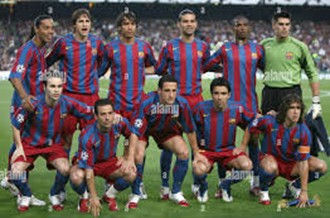Back to Roots? Why South American Clubs Could Surprise at the 2025 FIFA Club World Cup
- Sam Waller
- Apr 18
- 4 min read
Updated: Apr 29
by Sam Waller
The first year the FIFA Club World Cup was launched in 2000, it wasn’t your Barcelonas, Manchester Uniteds or Bayern Munichs that lifted the trophy; it was a Brazilian side, the Corinthians. The following years were also dominated by South American teams, with São Paulo and Internacional also beating European giants to the trophy. Although it is said that in the early days the European teams did not take this competition seriously, it still reminded the football world that it is more balanced than we thought. But fast forward to the present, and it's been over 10 years of dominance from European teams winning the competition.
But with this new format of the competition expanding to 32 teams and being played in a more World Cup style format, is this going to bring a change of fortune and bring the cup back to South America?
The early 2000s brought some great finals, with South America more often than not coming out on top. São Paulo famously beat the legends of the 2005 Champions League winner Liverpool, and the following year, Internacional scraped past Barcelona, who at the time had arguably the best players in the world (such as Iniesta, Xavi, Ronaldinho and a young Lionel Messi, to name a few). However, these weren’t just lucky wins; they were statements. Brazilian flair, passion and street-born talent could go head to head with football’s richest and best teams.


Potentially, the biggest upset came the last time a South American team won the competition in 2012. The Corinthians beat Chelsea in a tightly fought 1-0 win, but the cup has not returned to South America since. There is no doubt that the financial gap between teams has grown further since 2012, and the giant European clubs have continued to attract South America's best young talents. Yet, despite this imbalance, the passion and enthusiasm remain, along with the potential of a cup upset.

South America will be sending a serious group of footballing pedigree this summer to the United States. From Argentina, there will be River Plate, Boca Juniors and the reigning Copa Libertadores champions Fluminense. In previous years, we would only see Fluminense representing South America. Brazilian teams Flamengo, Botafogo and Palmeiras will also be attending this year's competition.

Whilst these clubs may be competing for the monetary rewards, they will restore some semblance of balance to the football world. River Plate, for example, combine the raw talent of Marcos Acuna and the experience of veteran goalkeeper Jeremias Ledesma, who has years of battling in the Spanish La Liga. Flamengo will be the ones to watch, being the current holders of the Copa Libertadores, who have had a number of players rumoured to move to Europe over the past few seasons.
The Brazilian league has been entertaining over the last decade with six different winners. Palmeiras are one of those teams that have been constantly at or near the top of the league and are known for developing young stars such as Endrick, who signed for Real Madrid last year.
If the draw is kind, one or more of these teams could easily reach the quarter-finals, although unlikely to be winners this time around. If a team from any other continent is going to win the Club World Cup this summer, they are likely to be from South America.

Of course, this will be a challenging demand for all teams outside of Europe. European teams will bring a wealth and broad depth of quality players with more experience and are used to playing at the highest tempo of football. Also, some South American teams will face longer travel times and the pressure of being the underdogs.
But what they lack in talent and resources, they make up for with spirit and flair, and the ability to be underestimated by their European opponents. South American teams know how to win ugly or with a touch from the hand of God. They thrive in knockout football and have the fan base and support to give them that 12th man to get them over the line!

There's also a tactical edge. South American football has its own rhythm: slower in possession, explosive on the counter, and unpredictable in the final third. With the street football culture, who knows what surprises they could create?
Yes, the headlines may focus mainly on the top European teams, but it’s almost a certainty that at least one Euro giant will get knocked out by one of the Davids of South America. As football history has told us before, tournaments aren’t just about the best overall team or the team with the biggest budget. They’re about moments; who is best on the day? So keep your eyes on the South American boys, especially after the group stages.








Comments